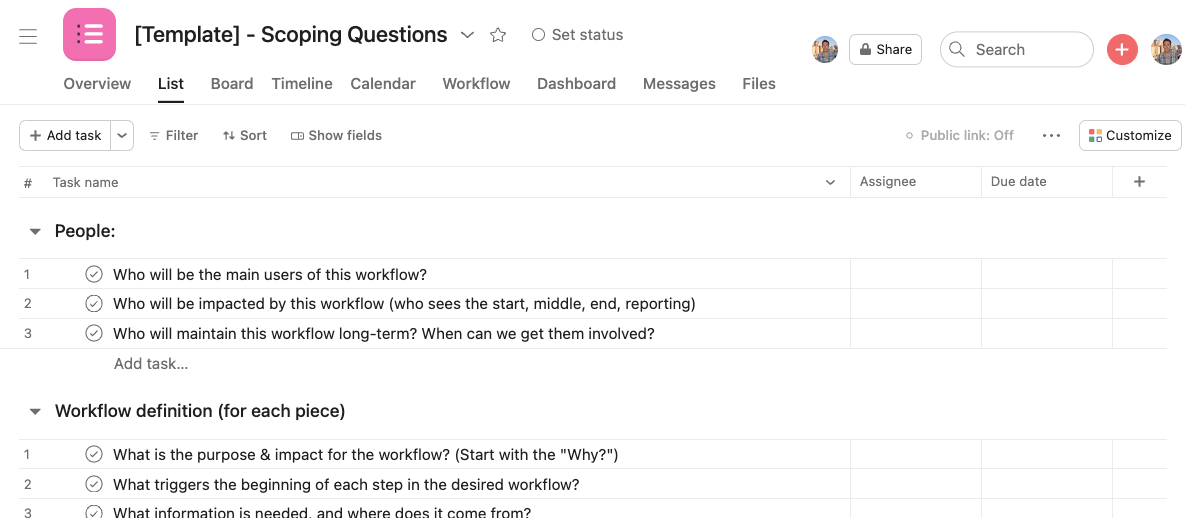Scoping the app
Whether you’re building an app for another team or for your own use, it’s beneficial to start by scoping the project before beginning development.
For reference, here is a template for an Asana scoping project. It contains the types of questions you may want to consider as you scope your custom app:

Use this Asana projectTo use this project template, click this link and your Asana account will open in a new tab and generate a new project using this template.
Understanding object relationships
If you are already very familiar with using the Asana web product, you can likely proceed to the next section. If you’re not an Asana expert or perhaps have never used Asana at all, it will likely be helpful to learn the names and relationships of the objects in Asana by reading the object hierarchy documentation.
Identifying objectives
Once you’re familiar with Asana’s objects and their relationships, you can proceed to identifying the overall objectives for the project. For instance, here are some of the questions you will need to answer in this stage:
- What is the purpose of your app?
- Who is it intended for?
- What features and functionality does it need to have?
- What systems does it need to connect with?
- What are the security and/or privacy concerns?
Creating a spec
After gathering the requirements from stakeholders, you can create a detailed specification for your app. This may include things like workflow diagrams, user interface design, data structures, APIs that need to be integrated, algorithms used in processing data within the app, and so on. The spec should be comprehensive enough so all parties are aligned on how the app will work and what it will do, along with the workflow in which it will be used.
Setting timelines and budgets
Once you have a specification for your app, you can set timelines for each phase of the development process (i.e., planning/designing/coding/testing/deployment). You will want to consider factors such as complexity of features being developed, number of developers needed, business deadlines, etc. Be mindful of the planning fallacy when budgeting time and setting dates.
Updated about 5 hours ago